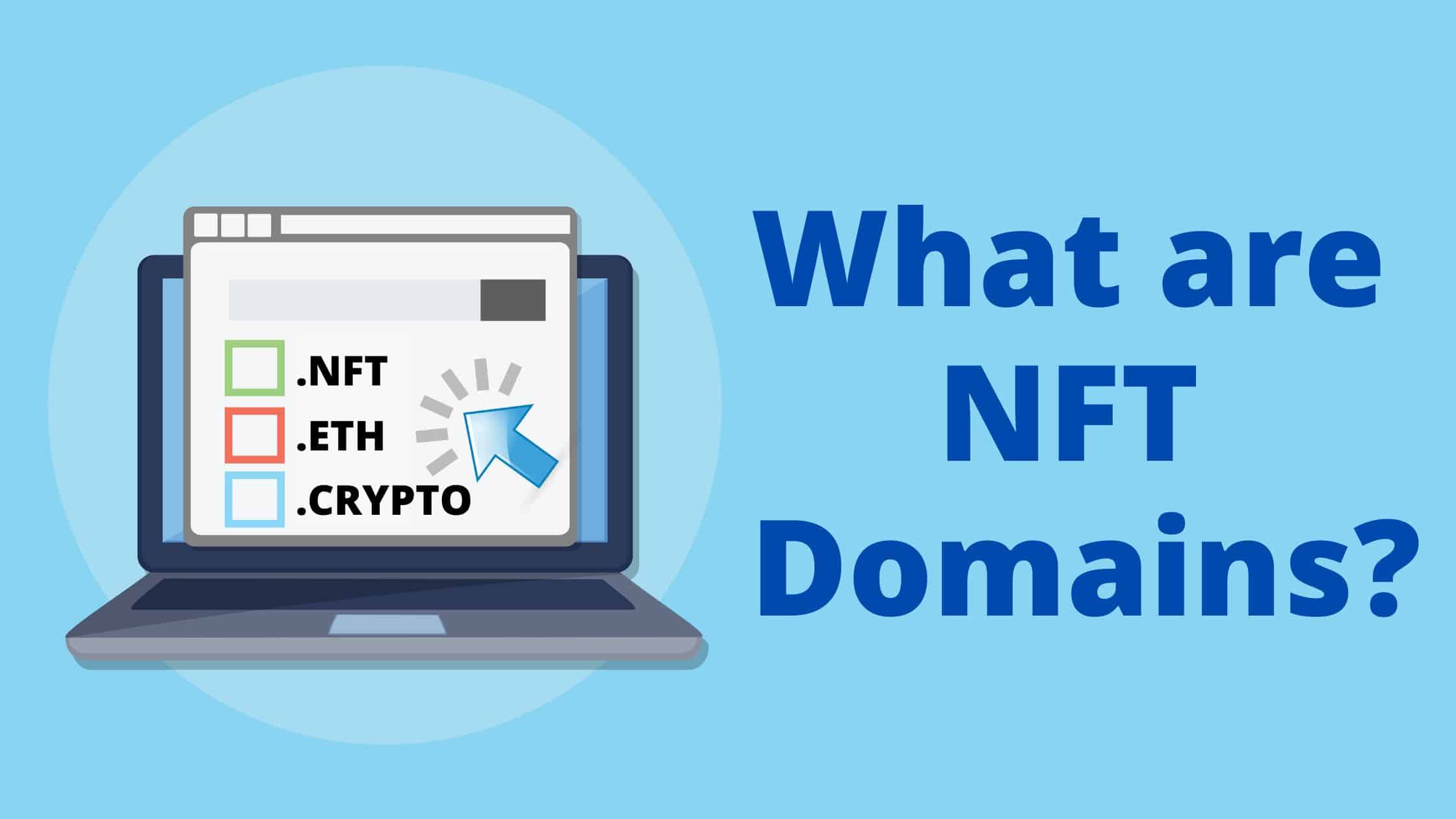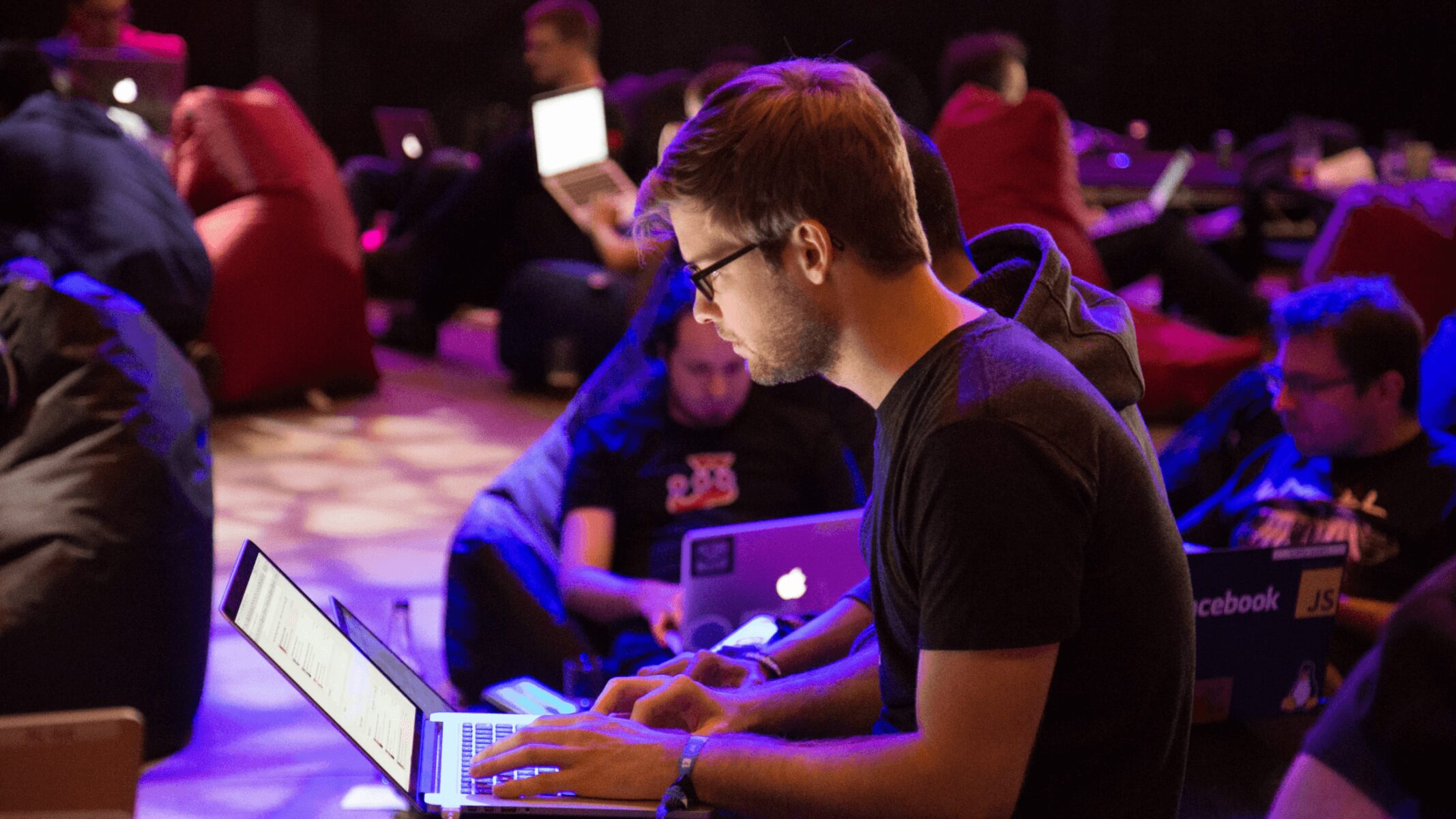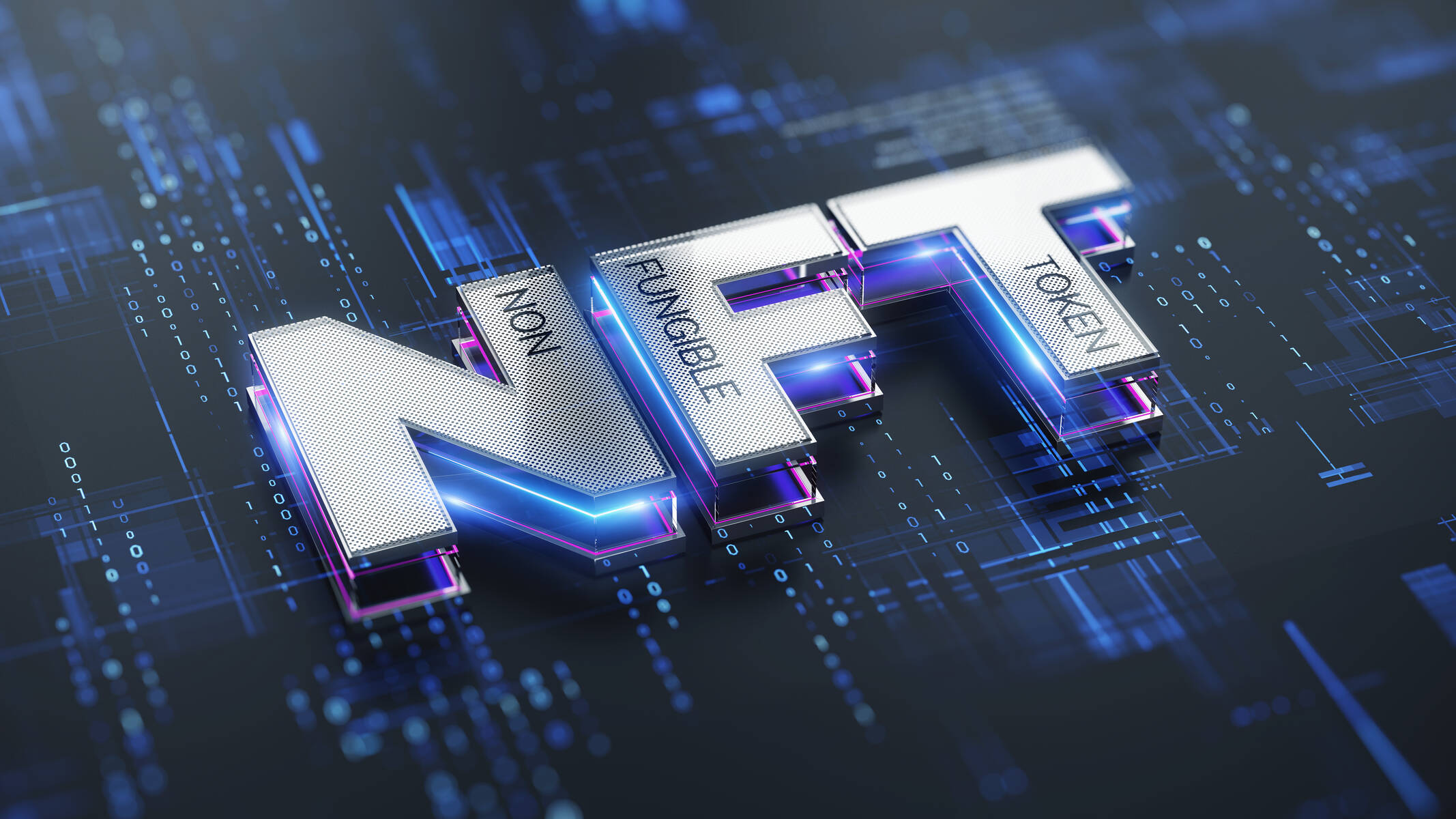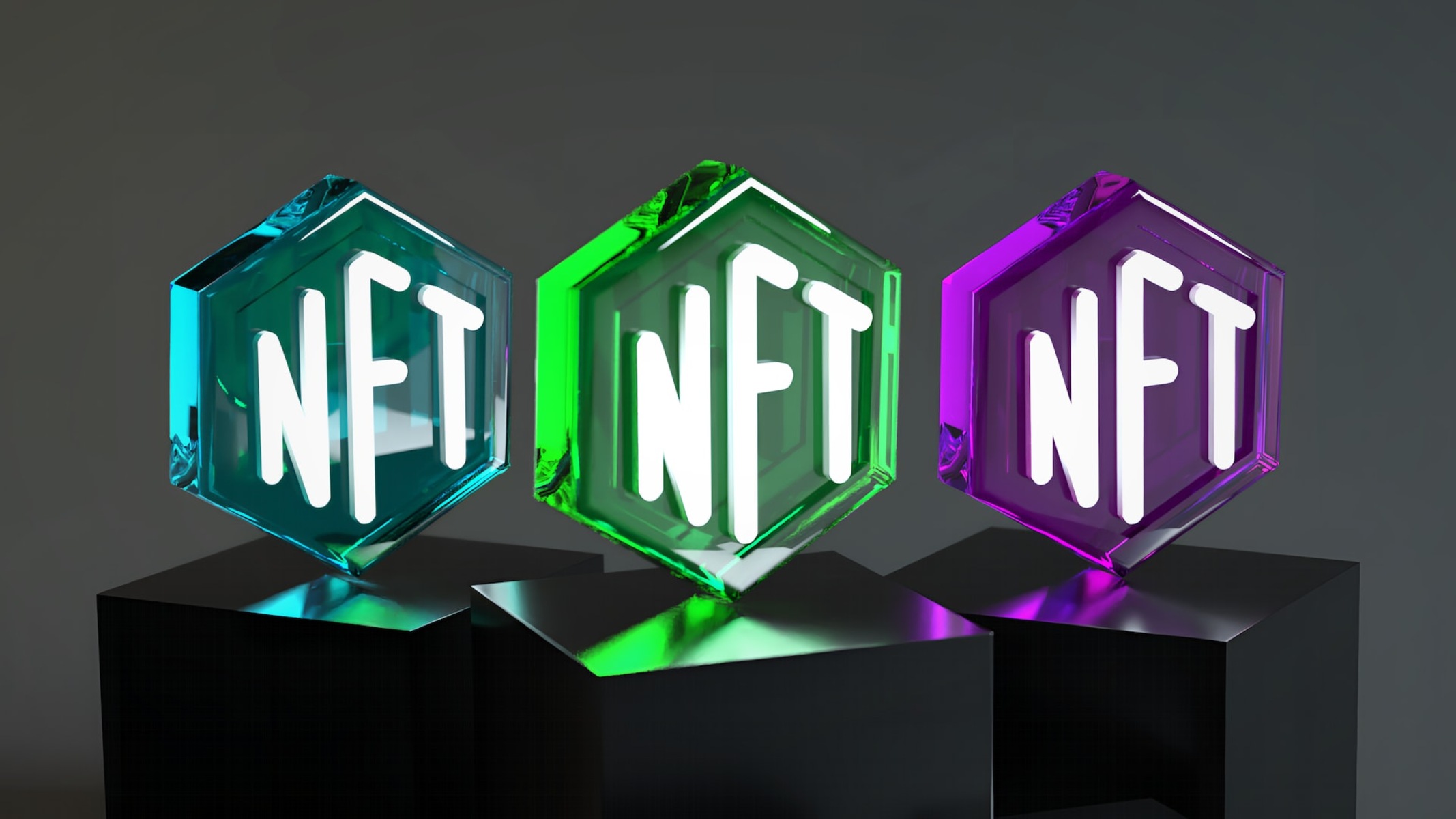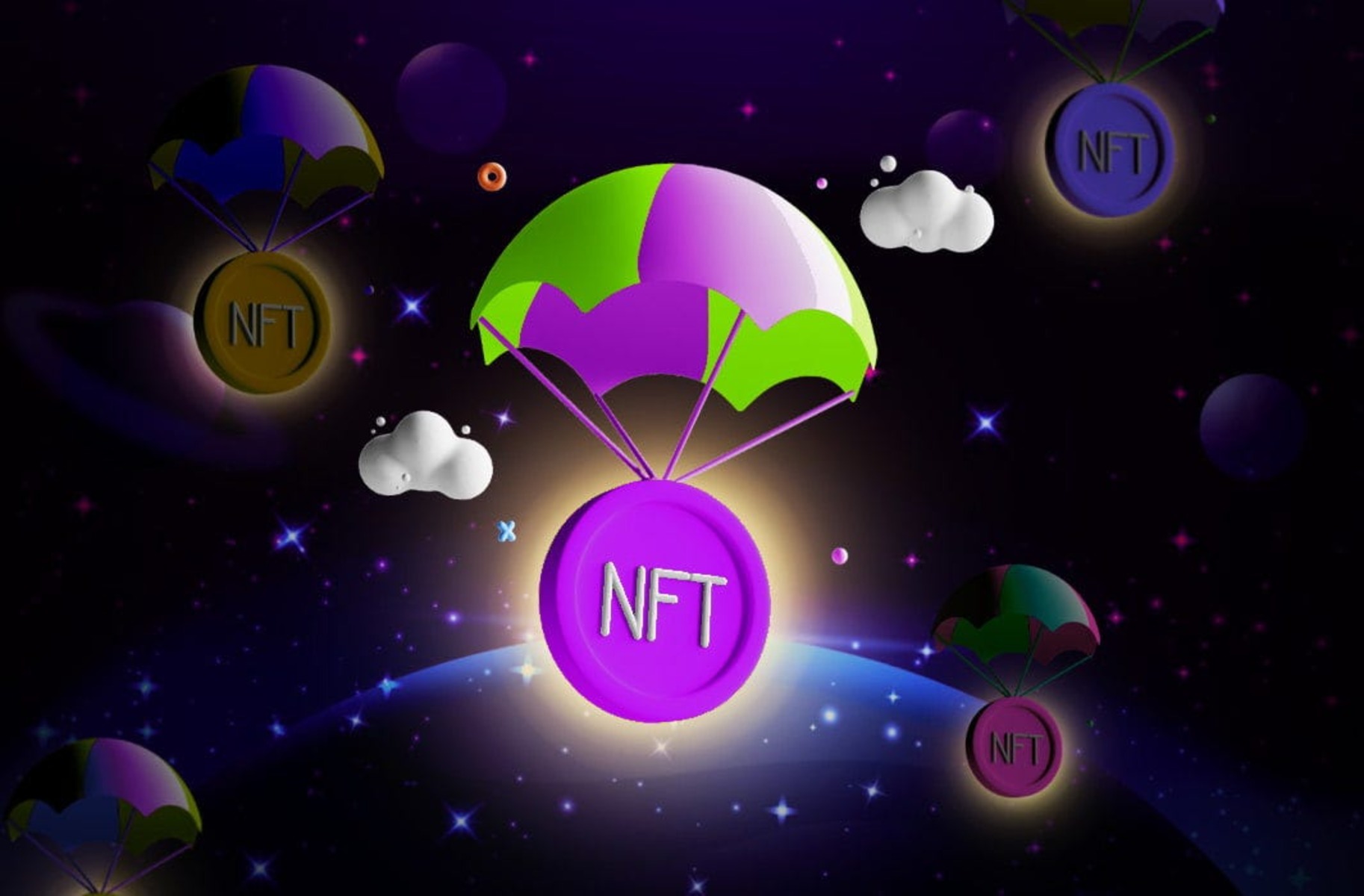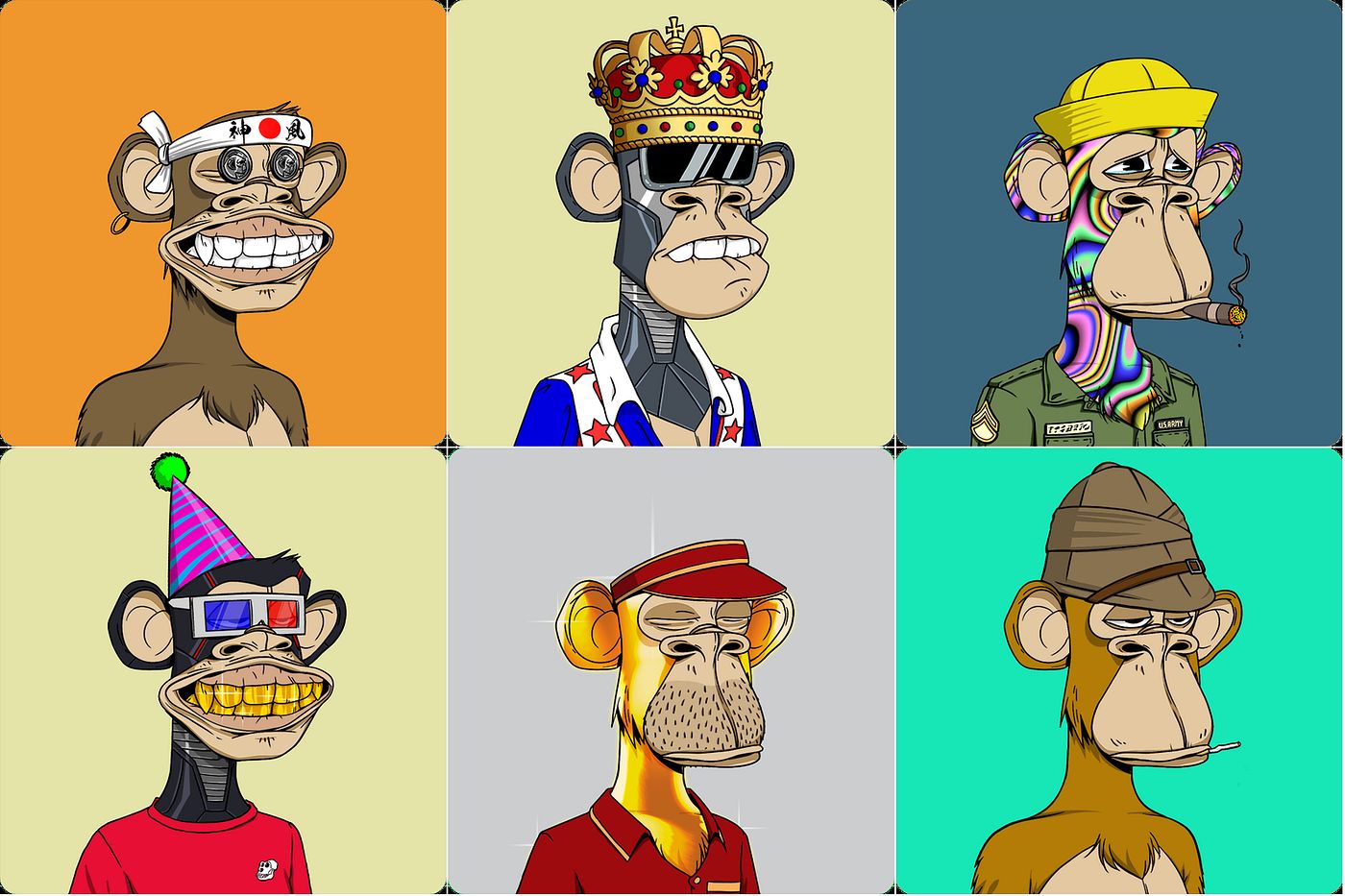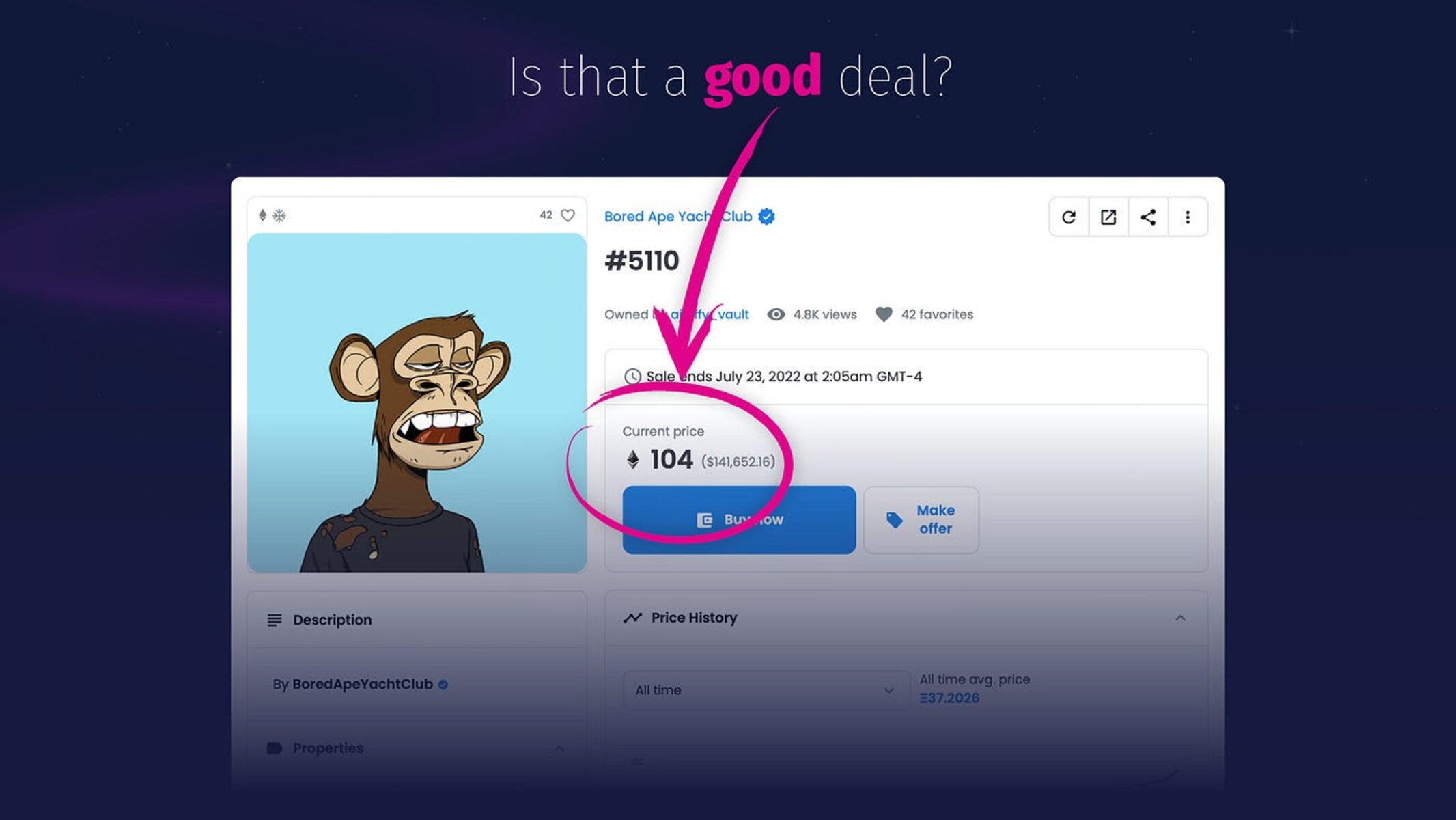Introduction
With the advent of technology and the rise of the internet, the way we create, consume, and monetize digital content has undergone a revolution. One of the latest trends to emerge from this digital age is the concept of Non-Fungible Tokens (NFTs). These unique digital assets have gained immense popularity and have become a topic of discussion across various industries.
In simple terms, an NFT is a type of cryptographic token that represents ownership or proof of authenticity of a specific piece of digital content, be it artwork, music, videos, or even virtual real estate. Unlike cryptocurrencies like Bitcoin or Ethereum, which are interchangeable and can be traded for one another, NFTs are unique and cannot be exchanged on a like-for-like basis.
NFTs are built using blockchain technology, which provides a decentralized and transparent system for recording and verifying ownership. This technology ensures that each NFT has a distinct digital signature, making it impossible to counterfeit or replicate. This factor, combined with the ability to establish a verifiable and permanent ownership record, has led to a surge of interest in NFTs.
The concept of owning digital assets is not entirely new. People have been buying and selling virtual items in video games for years. However, NFTs have taken this concept to a whole new level, allowing artists and creators to directly sell their work to a global audience, without the need for intermediaries.
The potential of NFTs goes beyond just digital art. They have the potential to revolutionize various industries, including music, gaming, collectibles, and even real estate. As the technology matures and becomes more widely adopted, we are likely to witness new and innovative use cases for NFTs.
In this article, we will explore the world of NFTs, how they work, their benefits, and the challenges they face. We will also delve into their growing popularity in the art world and their applications in gaming and investment. So, fasten your seatbelts as we take a closer look at the fascinating world of NFTs.
What is NFT?
A Non-Fungible Token (NFT) is a unique digital asset that represents ownership or proof of authenticity of a specific piece of content. While cryptocurrencies like Bitcoin are fungible, meaning they can be exchanged on a one-to-one basis, NFTs are non-fungible and cannot be exchanged for another NFT of equal value.
What makes NFTs special is their underlying technology – blockchain. NFTs are built on blockchain platforms like Ethereum, which provide a decentralized and transparent system for recording ownership. Each NFT has a digital signature that is stored on the blockchain, making it impossible to counterfeit or alter.
NFTs have gained popularity in the art world, where artists can create and sell unique digital artworks or collectibles directly to buyers. With the ownership of an NFT, buyers can prove their ownership of the original digital asset and even resell it on various NFT marketplaces.
Unlike physical art or collectibles, NFTs provide a way to verify the authenticity and provenance of the digital asset. This is achieved through the decentralized nature of blockchain, where every transaction and ownership record is publicly recorded and can be independently verified.
It is important to note that owning an NFT does not necessarily grant the buyer copyright or reproduction rights to the content itself. The original creator or artist still maintains the intellectual property rights, but the NFT serves as a proof of ownership and provides a way for artists to monetize their digital creations.
Aside from the art world, NFTs have also found applications in music, gaming, virtual real estate, and even ticketing. Musicians can release exclusive albums or merchandise as NFTs, allowing fans to own a unique piece of their favorite artist’s work. In the gaming industry, NFTs enable players to collect and trade virtual items that hold real value.
While NFTs offer exciting opportunities for artists and creators, their value is largely subjective and driven by market demand. The value of an NFT can fluctuate greatly, with some fetching millions of dollars while others see much more modest returns.
In the next section, we will explore how NFTs work and the underlying technology that powers them.
How do NFTs work?
NFTs are built on blockchain technology, which ensures transparency, security, and immutability. To understand how NFTs work, it is essential to grasp the concept of blockchain.
Blockchain is a decentralized ledger that records all transactions and ownership details in a transparent and tamper-proof manner. Each transaction is verified by a network of computers, known as nodes, and added to a chain of blocks. These blocks contain a digital fingerprint of the previous block, creating a chronological and unalterable record.
When it comes to NFTs, each token represents a unique piece of digital content and is associated with a specific metadata. This metadata can include information like the artist’s name, description, image, and other relevant details. It acts as a digital certificate of authenticity.
To create an NFT, an artist or creator needs to mint it on a blockchain platform that supports NFTs, such as Ethereum. Minting involves creating a smart contract that defines the unique characteristics and properties of the NFT. The smart contract is coded with specific rules and conditions that govern the ownership, transfer, and royalties of the NFT.
Once an NFT is minted, it is assigned a digital signature that represents its authenticity and uniqueness. This digital signature is then recorded on the blockchain, making it publicly verifiable and unable to be altered or forged.
When someone wants to buy an NFT, they can do so on various NFT marketplaces. These marketplaces act as platforms for artists and creators to showcase and sell their NFTs. Buyers can browse through a wide range of NFTs, place bids, or purchase them at a fixed price.
Once a buyer acquires an NFT, their ownership record is updated on the blockchain, and they receive a digital certificate proving their ownership. This certificate serves as proof that they own the original and authentic version of the digital asset.
One of the key features of NFTs is their programmability. Artists can include royalties in the smart contracts of their NFTs, allowing them to earn a percentage of each subsequent sale of the NFT. This ensures that artists can continue to benefit from the increasing value and popularity of their work.
It is important to note that the purchase of an NFT does not include the copyright or reproduction rights to the underlying content. The intellectual property rights usually remain with the artist or creator unless explicitly stated otherwise.
In the next section, we will explore the benefits of NFTs and why they have become so popular in recent years.
Benefits of NFTs
The rise of NFTs has brought about several key benefits for artists, creators, and buyers alike. Let’s explore some of the main advantages of NFTs:
1. Authenticity and Proof of Ownership: NFTs provide a way to verify the authenticity and provenance of digital content. The blockchain technology underlying NFTs ensures that each token is unique and cannot be replicated or counterfeited. Buyers can prove their ownership of the original version of a digital asset through the digital signature recorded on the blockchain.
2. Direct Artist-to-Buyer Relationship: NFTs allow artists and creators to directly connect with their audience and sell their work without intermediaries. This eliminates the need for galleries, record labels, or other middlemen, giving artists more control over their work and the ability to earn higher profits.
3. Monetization of Digital Assets: NFTs provide a new avenue for artists and creators to monetize their digital creations. By minting their artwork, music, or other digital assets as NFTs, they can sell them on various marketplaces and earn royalties from subsequent sales. This provides a sustainable income stream and allows artists to benefit from the increasing value of their work.
4. Global Reach and Accessibility: Digital art and other NFTs can be accessed and purchased by anyone around the world with an internet connection. This opens up new markets and opportunities for artists to reach a global audience, regardless of their geographical location. It also allows collectors and buyers to discover and collect unique pieces from artists they may not have had access to before.
5. Scarcity and Exclusivity: NFTs embody the concept of scarcity, as each token represents a unique piece of content. This scarcity adds value to the NFTs and makes them more desirable to collectors. The limited supply of certain NFTs, combined with the ability to prove ownership and authenticity, creates a sense of exclusivity and uniqueness for buyers.
6. Interactivity and Utility: NFTs can be designed to have interactive or utility features, adding value beyond just owning a digital asset. For example, some NFTs can grant access to exclusive content, experiences, or virtual spaces. This enhances the overall ownership experience and provides additional incentives for buyers to collect NFTs.
7. Transparency and Immutable Records: The use of blockchain technology ensures transparency and immutability of ownership records. Every transaction and ownership transfer is recorded on the blockchain and can be publicly verified. This eliminates disputes and provides a reliable and transparent history of ownership for each NFT.
These benefits have contributed to the rapid growth and adoption of NFTs in recent years. However, it is important to consider the challenges and concerns associated with NFTs, which we will explore in the next section.
Common Misconceptions about NFTs
As Non-Fungible Tokens (NFTs) continue to gain popularity, there are several misconceptions and misunderstandings surrounding this emerging technology. Let’s demystify some of the common misconceptions:
1. NFTs are just for art: While NFTs initially gained popularity in the art world, they have expanded to various industries beyond art. They have found applications in music, gaming, collectibles, virtual real estate, and more. NFTs offer a versatile platform for creators to monetize their work and for buyers to own unique digital assets.
2. NFTs have no inherent value: It is often argued that since digital content can be replicated or accessed for free, NFTs have no value. However, the value of an NFT lies in its scarcity, provenance, and the ability to verify ownership. The market demand for unique digital assets, combined with the transparency and security of blockchain, contributes to the value of NFTs.
3. NFTs are just a fad or bubble: There are concerns that the current hype around NFTs is a temporary trend that will eventually burst. While the market may experience fluctuations, the underlying technology of NFTs – blockchain – has proven to have long-term potential and transformative capabilities beyond the current hype.
4. NFT ownership means complete control of the content: Owning an NFT does not automatically grant copyright or reproduction rights to the underlying content. Artists and creators retain the intellectual property rights, and usage rights may still be subject to licensing agreements or restrictions. The NFT primarily represents ownership and authenticity of the digital asset.
5. NFTs are only for the wealthy: While high-profile NFT sales have made headlines for their staggering prices, NFTs exist at various price points. Artists can sell their work at more affordable prices, and buyers can find NFTs within their budget. NFTs also offer fractional ownership, allowing multiple individuals to collectively own a portion of an NFT.
6. NFTs are environmentally unfriendly: There have been concerns about the carbon footprint of blockchain networks like Ethereum, on which most NFTs are built. While the energy consumption of blockchain is a valid concern, efforts are being made to transition to more sustainable solutions, such as the move from proof-of-work to proof-of-stake consensus algorithms.
7. NFTs are easily replicated or forged: One of the key features of NFTs is their uniqueness and inability to be forged. Each NFT has a distinct digital signature stored on the blockchain, making it nearly impossible to counterfeit. However, it is important to be cautious and verify the authenticity of NFTs, especially when purchasing from secondary markets.
By addressing these misconceptions, we can gain a clearer understanding of the potential and limitations of NFTs. In the next sections, we will explore the influence of NFTs in the art world, gaming, and as a form of investment.
The Rise of NFTs in the Art World
Non-Fungible Tokens (NFTs) have made a significant impact on the art world, revolutionizing the way art is created, bought, and sold. The art community was quick to recognize the potential of NFTs, and artists began minting their digital creations as NFTs, creating a new era of digital art ownership.
One of the main advantages that NFTs offer artists is the ability to directly connect with their audience and sell their work without traditional intermediaries like galleries or auction houses. This enables artists to retain more control over their artwork and earn higher profits by eliminating the need for commission fees.
The ability to prove ownership and authenticity is another crucial aspect of NFTs that has appealed to the art community. Through the use of blockchain technology, each NFT is associated with a digital signature that is verifiable and cannot be counterfeited. This has significantly reduced the risk of art fraud and provided a transparent system for recording ownership records.
The scarcity and exclusivity of NFTs have also resonated with art collectors and enthusiasts. NFTs represent a limited edition or even a one-of-a-kind piece of digital art, making them highly coveted by collectors. The ability to own a unique piece of art and prove its authenticity holds immense value in the art world.
Furthermore, NFTs have expanded the concept of art ownership beyond physical boundaries. Digital art, which was often dismissed in traditional art circles, has gained newfound recognition and value through NFTs. Artists can create and sell digital artworks that can be easily shared, displayed, and transferred digitally, overcoming the limitations of physical art mediums.
The impact of NFTs on the art world extends beyond just the buying and selling of art. NFTs have sparked conversations about the definition of art and what it means to own a piece of art in the digital age. It has challenged traditional notions of art ownership, copyright, and the role of intermediaries in the art market.
While the rise of NFTs in the art world has been met with great enthusiasm, it has also raised important questions and debates. Some critics argue that NFTs prioritize the market value of art over its artistic and cultural significance. Others express concerns about the environmental impact of blockchain networks used for NFT transactions.
Nevertheless, one cannot deny the significant impact NFTs have had on the art world. They have provided a platform for artists to explore new mediums of artistic expression, reach a wider audience, and redefine the concept of art ownership. As the technology evolves, it will be fascinating to see how NFTs continue to shape the future of the art world.
NFTs in Gaming and Collectibles
Non-Fungible Tokens (NFTs) have made a significant impact in the gaming industry, transforming the way players collect, trade, and interact with virtual assets. NFTs have brought a new level of ownership and value to in-game items, creating an economy within gaming ecosystems.
One of the key benefits of NFTs in gaming is the ability to truly own virtual assets. Unlike traditional gaming items that are owned and controlled by the game developers, NFTs allow players to have true ownership and control over their digital items. This means that players can freely buy, sell, and trade their NFT-based items both within and outside of the game’s ecosystem.
NFTs have also introduced the concept of scarcity and rarity in gaming. In-game items and collectibles minted as NFTs can be limited in supply, creating a sense of exclusivity and increasing their value. Players can strive to acquire rare or unique NFTs, driving up the demand and creating a vibrant market for virtual assets.
Furthermore, NFTs have enabled players to monetize their gaming skills and achievements. Players can earn NFTs as rewards for in-game accomplishments, such as completing difficult quests or achieving high scores. They can then sell these NFTs to other players, creating opportunities for players to earn real-world value from their gaming activities.
Gaming companies have also embraced NFTs as a way to foster player engagement and loyalty. By incorporating NFTs into their games, companies can provide players with a sense of ownership and investment in the virtual world, leading to increased player retention and a thriving gaming community.
Beyond gaming, NFTs have also revolutionized the world of collectibles. NFTs have provided a digital medium for collectors to acquire, showcase, and trade virtual collectibles. These collectibles can range from virtual trading cards to virtual real estate, allowing collectors to build and display their digital collections.
Collaborations between popular brands, celebrities, and digital artists have further fueled the demand for NFT collectibles. Limited-edition NFTs featuring iconic characters, artwork, or memorabilia from movies, music, and sports have become highly sought-after by collectors and fans.
The integration of NFTs into gaming and collectibles has created new opportunities and challenges. While it has opened up avenues for players and collectors to monetize their virtual assets, it has also raised concerns about copyright infringement, fraud, and the environmental impact of blockchain networks.
As NFTs continue to evolve, we can expect to see further innovations and applications in gaming and collectibles. From virtual experiences to virtual worlds, NFTs are shaping the future of how we interact with digital assets and transforming the way we perceive ownership in the virtual realm.
NFTs as a Form of Investment
Non-Fungible Tokens (NFTs) have emerged as a new and unique form of investment, attracting attention from both traditional and cryptocurrency investors. NFTs offer the potential for significant returns on investment, as well as the opportunity to diversify investment portfolios in the digital realm.
One of the main factors driving the investment interest in NFTs is the potential for value appreciation. With limited supply and increasing demand, certain NFTs have witnessed explosive price growth. High-profile sales and auctions of rare or iconic NFTs have grabbed headlines, drawing attention to the investment potential of these digital assets.
Furthermore, NFTs provide a tangible ownership experience that traditional investments may lack. Investors can own a unique piece of digital art, a virtual real estate property, or a collectible item that holds value not only in the virtual world but also in the eyes of other collectors and enthusiasts.
Investing in NFTs also provides opportunities for supporting emerging artists and creators. By purchasing their NFTs, investors can directly contribute to the growth and recognition of talented individuals, potentially benefiting from their success as their career progresses.
NFTs also offer liquidity in the investment market. Investors can buy and sell NFTs on various online marketplaces, allowing for quick and relatively easy transactions. Investors have the flexibility to divest their NFT holdings if they choose to, potentially capitalizing on favorable market conditions.
However, it is important to note that investing in NFTs comes with its own set of risks and uncertainties. The value of NFTs can be highly speculative and volatile, making it important for investors to do thorough research and analysis before making investment decisions.
Another concern with NFT investments is the lack of regulation in the space. As NFTs are relatively new and operate in a decentralized manner, there are fewer protections in place for investors compared to traditional investment markets. Investors should exercise caution and ensure they are buying NFTs from reputable sources.
Moreover, the environmental impact of blockchain networks used to power NFT transactions is a growing concern. The carbon footprint of these networks, particularly those that rely on energy-intensive proof-of-work algorithms, raises questions about the sustainability of NFT investments.
While NFTs offer exciting investment opportunities, it is crucial for investors to approach them with due diligence and a long-term investment mindset. Understanding the market dynamics, assessing the intrinsic value of the NFTs, and diversifying one’s investment portfolio are key considerations for those looking to explore NFTs as a form of investment.
The future of NFT investments remains uncertain, but as the technology and market continue to evolve, it will be fascinating to see how NFTs integrate with traditional investment practices and the broader financial landscape.
Challenges and Concerns with NFTs
While Non-Fungible Tokens (NFTs) have gained significant popularity and attention, they also come with their fair share of challenges and concerns. It is important to address these issues in order to better understand the limitations and potential risks associated with NFTs.
1. Market Volatility: One of the main concerns with NFTs is the high level of price volatility. The value of NFTs can fluctuate greatly, with some experiencing rapid appreciation while others see a decline in value. This volatility can make it difficult for investors and collectors to accurately assess the true worth of an NFT.
2. Lack of Regulation: The NFT market currently operates with limited regulation, particularly when compared to traditional investment markets. This lack of regulation raises concerns about scams, fraud, and the security of transactions. Investors need to exercise caution and conduct thorough research before engaging in NFT transactions.
3. Copyright and Intellectual Property Concerns: NFTs raise complex questions surrounding copyright and intellectual property rights. While owning an NFT may provide proof of ownership for a digital asset, it does not necessarily grant the buyer copyright or reproduction rights to the underlying content. Artists and creators may need to carefully consider how their work is represented and protected within the NFT ecosystem.
4. Environmental Impact: The energy consumption associated with blockchain networks, particularly those that rely on proof-of-work algorithms, has raised concerns about the environmental impact of NFTs. Critics argue that the carbon footprint of NFT transactions undermines the sustainability and long-term viability of this digital asset class.
5. Technological Limitations: The scalability and efficiency of blockchain networks that support NFTs are still being improved. Transaction fees and network congestion can present challenges for users, particularly during peak periods of activity. Additionally, the user experience of interacting with NFTs, such as navigating marketplaces and managing digital wallets, may pose challenges for less tech-savvy individuals.
6. Access and Inclusivity: The current NFT market has faced criticism for its limited accessibility and potential exclusion of artists and collectors who do not have access to the necessary resources or connections. Steps need to be taken to ensure that NFTs are inclusive and provide opportunities for a diverse range of creators and collectors.
7. Overhype and Speculation: The rapid growth and media attention surrounding NFTs have led to concerns about bubble-like behavior and speculative investment practices. It is important for investors and collectors to consider the inherent value and long-term sustainability of NFTs rather than solely focusing on short-term financial gains.
Adressing and mitigating these challenges will be crucial for the continued growth and success of NFTs. As the technology and market mature, it is expected that measures will be taken to improve regulations, sustainability, and inclusivity in the NFT ecosystem.
Future Outlook of NFTs
The future of Non-Fungible Tokens (NFTs) holds immense potential for further growth, innovation, and widespread adoption. While still in its early stages, NFTs are poised to disrupt various industries and pave the way for new economic and creative opportunities.
1. Continued Expansion into Different Industries: NFTs have already made an impact in art, gaming, and collectibles. The technology is expected to extend into new realms, such as virtual real estate, music, sports memorabilia, and even identity verification. The versatility of NFTs allows for limitless possibilities in terms of digital asset ownership and monetization.
2. Integration with Virtual and Augmented Reality: As virtual and augmented reality technologies advance, we can expect to see the integration of NFTs into these immersive experiences. NFTs could be used to own and trade virtual items or provide exclusive access to virtual spaces, creating a new dimension of in-game economies and digital ownership.
3. Enhanced Interoperability and Standardization: Currently, there are multiple blockchain platforms supporting NFTs, which can hinder seamless interoperability between different ecosystems. Efforts are being made to establish industry standards and protocols that enable the transfer and interaction of NFTs across different platforms, providing a more connected and user-friendly experience.
4. Sustainability Measures: The environmental concerns associated with NFTs and their reliance on energy-intensive blockchain networks have prompted discussions on implementing more sustainable solutions. The transition towards greener technologies, such as blockchain networks powered by renewable energy or the adoption of more energy-efficient consensus algorithms, aims to mitigate the carbon footprint of NFTs.
5. Increased Investor Protection: As the market for NFTs continues to grow, there will likely be efforts to establish greater regulation and investor protection. This could involve more transparency in NFT marketplaces, including verified artist profiles, provenance tracking, and mechanisms to prevent fraud and counterfeit NFTs.
6. Mainstream Acceptance and Integration: The mainstream adoption of NFTs will play a significant role in shaping their future. As more artists, brands, and institutions embrace NFTs, they will become increasingly integrated into our everyday lives. NFTs could be used for ticketing, loyalty programs, digital identity, or even as a means of fractional ownership in traditional assets.
7. Cultural and Social Impact: The rise of NFTs has sparked conversations about the value of digital art, the democratization of creativity, and the redefinition of traditional ownership models. The cultural and social impact of NFTs will continue to evolve as they challenge established norms, empower creators, and reshape the relationship between art, technology, and society.
While challenges and uncertainties remain, the future outlook for NFTs is undoubtedly promising. The transformative power of blockchain technology, combined with the growing appetite for digital ownership, suggests that NFTs will continue to evolve, shape industries, and provide new avenues for creativity, investment, and engagement in the digital era.
Conclusion
Non-Fungible Tokens (NFTs) have emerged as a powerful force, revolutionizing the way we create, consume, and monetize digital content. These unique digital assets, built on blockchain technology, offer a new era of ownership and authenticity in the digital realm. From art to gaming, collectibles to investments, NFTs have found applications in a range of industries, creating a vibrant ecosystem of creators, investors, and enthusiasts.
NFTs have provided artists with new opportunities to directly connect with their audience, bypassing traditional intermediaries and earning higher profits. The ability to establish provenance and ownership has brought transparency and trust to the art world while empowering collectors to own unique pieces of digital art and virtual assets.
Beyond the art world, NFTs have transformed gaming and collectibles, granting players true ownership of in-game items and allowing for the creation of vibrant virtual economies. NFTs have also attracted attention as a form of investment, offering potential value appreciation and diversification of investment portfolios.
However, challenges and concerns exist in the world of NFTs. Market volatility, lack of regulation, copyright issues, and environmental impact raise important considerations for investors, artists, and users alike. The future outlook of NFTs hinges on addressing these challenges while fostering inclusivity, sustainability, and responsible innovation.
As NFTs continue to evolve, we can anticipate advancements in interoperability, standardization, and the integration of NFTs with emerging technologies like virtual and augmented reality. Mainstream acceptance and increased investor protections are essential for the long-term growth and stability of the NFT market.
Ultimately, the rise of NFTs represents a transformative shift in how we perceive and engage with digital assets. The cultural and social impact of NFTs is profound, challenging traditional notions of ownership, value, and creativity in the digital age. As NFTs continue to shape industries and push the boundaries of technology, it is certain that their influence will extend far beyond the present, opening up new possibilities and opportunities for artists, creators, investors, and enthusiasts alike.









